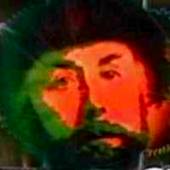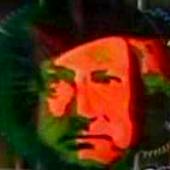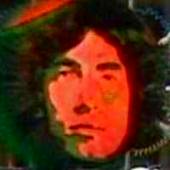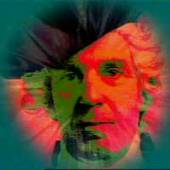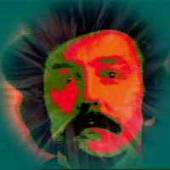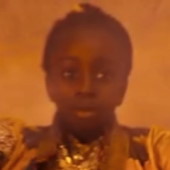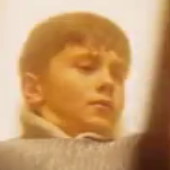
|

|

|

|

|

|

|

|
| ||||

|

|

|

|

|

|

|

| |||||
| Return to THE COMPLETE ADVENTURES index | Return to site index | |||||||||||
The Complete Adventures
| The first Doctor? Although it's traditional to refer to the William Hartnell incarnation as the "first" Doctor, we know that there were many others before him. There are at least eight immediately preceding the Hartnell incarnation, and these are seen clearly during the mind-wrestling sequence in The Brain of Morbius.
The Doctor is not present when the guards arrive, and we can only speculate what happens to him next. Maybe he escapes from Gallifrey, and spends the subsequent three incarnations as a fugitive. What is certain is that the Doctor eventually returns to Gallifrey and is born from the Loom of Lungbarrow as the Hartnell incarnation, with little or no memory of having lived before. As far as his cousins are concerned, he's a new person. Perhaps this was imposed upon him as a form of punishment - but in the absence of any contradictory evidence, I prefer to think that the Doctor has done something clever to elude his pursuers. He has regenerated, but arranged things so it appears he's being woven from the Loom. The fact that he still has a navel shows he's really the same womb-born Time Lord as the previous incarnations. (And indeed in Lungbarrow, the young Doctor says that he can remember being in the Loom, waiting to be born, which is dismissed as "impossible".) However, we cannot dismiss completely the notion that the Time Lords themselves wiped the Doctor's memories and effectively let him be born again as a new person. They certainly seem to have form for this - evidence revealed in The Timeless Children suggests that the Doctor's history may go back much further than we hitherto suspected - maybe even to an origin preceding Gallifrey and the Time Lords - but the veracity and reliabilty of this information is as yet uncertain. Nevertheless, we have seen the suggestion of multiple regenerations.
| ||||||||||||||||
| Ambassadorial status The notion of the Doctor serving as an ambassador has precedent in the series - it is presumably in this capacity that he first met Dastari. In the two missions presented here, the Tardis is nowhere to be seen - presumably the Doctor travels by Time Ring. In the first mission, he is dressed in some sort of spacesuit. The second assignment could be some considerable time later - the Doctor has now adopted an Edwardian costume. The fact that he encounters the Daleks here, and indeed makes peace with them, is forgotten later on. | ||||||||||||||||
| Departing Gallifrey One of the more nebulous areas in the Doctor's backstory is his flight from Gallifrey. The tv episodes offer contradictory information about it. Several different authors have attempted to depict it, with different results each time. Here, I'm trying to reconcile these different accounts into a whole. In Nightshade, the Doctor is shown entering the Tardis on his own - no sign of Susan or the Hand of Omega - and dressed in Time Lord robes. It could be that this is a clandestine trip he's undertaking to test how easy it will be to get away. Alternatively, he could be responding to a stronger impulse. Though his original memories were suppressed at the time of his Looming, he might have left himself some post-hypnotic commands - such would explain his returning to the past, to rescue Patience and her granddaughter, as seen in flashback in Cold Fusion. Patience recognizes that the Doctor is wearing her husband's ring. | ||||||||||||||||
| Susan Susan is of course the Doctor's granddaughter - but again, we have different stories about her origins. In Cold Fusion, we learn that the Doctor's granddaughter is born just as his family are being arrested in the persecution of the womb-born. Patience recalls the first Doctor arriving to spirit her and the granddaughter away. Was this Susan? Presumably the Doctor then took her to the Old Time, where we next see her. However, in Lungbarrow, Susan is said to be the granddaughter of the Other, trapped on Gallifrey during a time of civil war. When the first Doctor turns up, she recognizes him as her grandfather. As the Other had thrown himself into the Looms, the implication is that his essence has somehow been reborn in the Doctor. As I've said above, the Doctor was not really Loom-born, but it is possible that he picked up some of the Other's life force as he passed through. Both of these accounts of Susan's origin come with the caveat that they're memories of uncertain provenance - I suspect that the truth is somewhere in between. When we see the Doctor and Susan entering the Tardis in Time & Time Again, it's also to escape some sort of civil war or revolution, which could tie in with Lungbarrow - although the implication is that they're leaving contemporary Gallifrey, as it is in The Name of the Doctor and The Exiles. Did they therefore return to modern times? How did the Doctor explain Susan on a world with no more children? The highly-stylized account in The Longest Story in the World suggests there may have been difficulties. The other account of their departure is in Birth of a Renegade. Again, the Doctor seems to be fleeing a contemporary civil war/revolution - although his memories of it are vague and have apparently been selectively wiped. He finds a 7 year old Susan hiding in the Tardis, and adopts her as his "granddaughter". Here, she is said to be the Lady Larn, the last surviving descendant of Rassilon. It is possible though that the Doctor is deliberately misremembering events in order to confound the Master. | ||||||||||||||||
| Earthman? Where's Susan in these stories? I've decided to place them here rather than later on with the other Annual stories as they seem to chronicle early voyages - The Sons of the Crab is the first time the Doctor has been outside the Milky Way, and The Lost Ones is his very first visit to Vortis. But they need to go after Frayed as that documents the Doctor's first encounter with humanity. (I'll gloss over his earlier ambassadorial work - there have been enough mind-wipes and memory losses to forget about that - this might also explain why he doesn't remember the Daleks...) What's interesting about these tales is that the Doctor refers to himself as human and coming from Earth. So is it possible that he's settled on Earth for a while, long enough to think of it as home? It's even possible that he has family living there. Think back to the pre-Hartnell incarnations - what was the Doctor up to during his three incarnations on the run? Perhaps he was rescuing members of his family who had escaped the purge - where better for the half-human Doctor to take them than the Earth, his mother's home planet? If some of his children ended up living on Earth, that would explain how two Earth children can turn up later as his grandchildren - also that would be someone to leave Susan with while he explores. It's interesting to note that the Tardis is already in police box form in these tales, before the chameleon circuit has actually stuck. We could infer that the police box is a default setting for visiting twentieth century England, and that the Doctor has temporarily switched off the circuit. (The fact that the earlier Doctor's hidden Tardis, as seen in Fugitive of the Judoon, is also in the shape of a police box might support this idea.) | ||||||||||||||||
| Give-a-Show I've cheated a bit here. Rather than treating each of the Projector slides as a separate story, I've arranged them into a single epic tale. After first discarding four slides that were essentially re-tellings of tv stories (The Secrets of the Tardis deriving from An Unearthly Child; Doctor Who in Lilliput from Planet of Giants; On the Planet Vortis and The Zarbi Are Destroyed from The Web Planet) I rearranged the other 12 into a travelogue-style story, culminating in a battle with the Daleks, making use of the new order to reinforce continuity. So for instance, the Watermen could have given Ian the ray pistol he uses on the Aquafien; and the scientist rescued from the Daleks is the one who invents the weapon that repels their invasion. | ||||||||||||||||
| First Doctor solo? The Hartnell era is perhaps the most tightly-knit segment of Doctor Who: many stories leading into the next, and a continuous roster of companions. Just about the only place where there seems a distinct break between stories is after The Dalek Masterplan. Some considerable time seems to have passed by The Massacre - the Doctor and Steven are back to normal, and make no mention of the cataclysmic events on Kembel. So this is clearly the place to insert extra stories. Tales like Ash and Roses deal with the aftermath of The Dalek Masterplan, leading into the first Doctor's role in The Five Doctors - and then the framing story of The Witch Hunters clearly indicates that the Doctor has been given some freedom by Rassilon. I have interpreted this as meaning he now has a degree of control over the Tardis - this deals with the main objection to inserting extra stories here, that the Doctor would never be able to get back to pick up Steven. I also like the idea that the Doctor has glimpsed some of his future during his mindlink with his other incarnations - hence he can sign Rebecca Nurse's release papers with the name Benjamin Jackson - and he is clearly aware of his coming regeneration. This fits with the notion of him taking some time out, checking up on his grandchildren, and so on. | ||||||||||||||||
| Where did John and Gillian go? At the end of The Experimenters, the Doctor leads his grandchildren back to the Tardis to head off on another adventure. When we next see them, in The Extortioner, they are waiting inside the Tardis for the second Doctor who's gone outside to explore on his own. There's no comment about the Doctor's change of appearance, and interestingly enough, they never call him grandfather again. I'd suggest there's an unseen story here where the first Doctor takes his grandchildren forward and hands them into the safe keeping of the second - perhaps telling them he's a friend who'll look after them from now on. This might also explain why the second Doctor leaves them inside the Tardis at first - he's uncertain about this new responsibility and doesn't want to expose them to danger, and has perhaps forgotten how resourceful they can be. Indeed, he comes back saying he missed their assistance and will take them with him in future. | ||||||||||||||||
| The Black Hole This story goes to great efforts to position the second Doctor's involvement in The Two Doctors between its second and third episodes - and I will acknowledge here that this is backed up by the dialogue in Deathworld. But while this holds true for these two Big Finish dramas, it remains at odds with most other sources that suggest it occurs post-The War Games in the so-called "Season 6B" period. For one thing, the sheer number of stories (particularly comic strips) that feature further adventures of the Doctor and Jamie seem to me too many to be encompassed by the provisions of The Black Hole, which suggests only that they take a few detours before getting back to the Habitat. I also have to take account of the very deliberate set-up for The Two Doctors at the end of the novel World Game. In addition, there's specific dialogue in The Two Doctors which generally seems to support the 6B placement. The Doctor tells Dastari that he undertakes missions for the Time Lords as the price for his freedom. (Now, this could conceivably - at a pinch - fit with The Black Hole, if one reads it to means he won't get turned in if he does this favour for Constable Pavo.) But he also objects to the fitting of the remote control to the Tardis console, and says he'll complain about it when they get back to the Time Lords, which to my mind, fits awkwardly with The Black Hole, in which Pavo/the Monk had already advised him that this would be happening. (And one thing is certain - however one spins the ramifications of The Black Hole, it definitely does not invalidate "Season 6B".) In an attempt to reconcile all the evidence, I would suggest that this is what happens in The Black Hole: The Monk has discovered that the Sontarans are about to attack Space Station Camera and slaughter the crew, so he decides this will make a suitable trap to send the Doctor into. It's made abundantly clear in dialogue that he knew the Sontarans would be there - and as Jamie says: "you sent us there to die!" We can assume the Monk also detects temporal distortions there from the time travel experiments, making it a totally plausible environment into which the Time Lords would send an agent. The implication from Deathworld is that the events seen in The Two Doctors do indeed play out here. But upon their return to the Habitat, the Doctor and Jamie seem more vague in their recollections - they know there were Sontarans and that they avoided a trap that might have killed them, but they don't talk about the time travel experiments or the genetic modifications the Doctor underwent. So we could suppose that when Death returns the Doctors to their proper timestreams at the end of Deathworld, as well as erasing the events of that story, some of the surrounding events are altered too - becoming unstable parts of the timeline. (Certainly, Death implies that he has control over the events from which the Doctor was taken.) When the Doctor gets back to the Habitat, via a number of unplanned detours, he's only got the vaguest recall of what happened. At the end of The Black Hole, it's implied that (the real) Pavo wipes the Doctor's memory of it all anyway, so neither he or Jamie will remember any of it. Now, let's jump ahead to World Game. The quantum instability caused by the timeline erasure means that, as
it appaers now, the Doctor was never on Space Station Camera and never put a stop to the time travel experiments. In sending
the Doctor there to see Dastari, the CIA are (intentionally or not) also helping to restore the damaged timeline.
The Doctor asks for Jamie as a companion, which of course means undoing the memory wipe that was done on Jamie
at the end of The War Games. I reason that the Doctor doesn't want Jamie to have to go through all the
heartbreak of their separation again, so he suggests that the CIA reset Jamie's memory to an earlier time. But
when considering which point they should roll Jamie back to, some subconscious memory of The Black Hole
comes back to him - the mention of Dastari and Space Station Camera triggering the thought of Victoria studying
graphology - so he gives it as the new backstory for Jamie. And so the events of The Two Doctors unfold from there.
| ||||||||||||||||
| Future Imperfect We have to take a bit of a leap here. As written, the story seems to takes place at the end of The Mind Robber, with the Doctor encountering Gulliver again in the Land of Fiction. It then transpires that Gulliver is in fact Goth (a joke based on the fact that actor Bernard Horsfall played both parts), and this leads into the second Doctor's involvement in The Three Doctors. But this doesn't work because The Three Doctors must clearly take place after The Invasion, as the Doctor recognizes Benton and talks about the Cybermen. In The Three Doctors, we see the second Doctor run out of a building on a fog-covered landscape, implying he's lifted from an otherwise unseen adventure. I suggest that he's disorientated by being lifted from his timestream, and temporarily believes himself to be still in the Land of Fiction when he meets Goth - perhaps he even assumes that The Invasion was all a fantasy. | ||||||||||||||||
| The Eye of the Giant/The Scales of Injustice There are a few inconsistencies apparent during the early years of the third Doctor's exile on Earth, notably around events like Mike Yates joining UNIT, and Liz Shaw's decision to leave. Though a few details here and there don't match up, most of the information we receive is broadly consistent. The young Lieutenant Yates get seconded to UNIT (Vengeance of the Stones), promoted to Captain, in time to clear up the aftermath of the Auton invasion - remains as a background character (the "new Captain" mentioned in The Blue Tooth) - and finally moves up to become the Brigadier's second in command prior to Terror of the Autons. Meanwhile, The Blue Tooth sees Liz starting to think about leaving the Doctor - she spends some time away from UNIT in The Devil Goblins from Neptune, and is definitely considering her future plans in Reconnaissance and Country of the Blind before making her final departure in Prisoners of the Sun. It's only the novels The Eye of the Giant and The Scales of Injustice that seem really out of step with this pattern. In the latter, Liz makes a different and seemingly quite final decision to depart UNIT - whilst Mike Yates is only a Sergeant in these tales and gets promoted to Captain right at the end. (I'll leave aside the fact that such a promotion seems militarily unlikely - if not downright impossible.) I speculate therefore that when the Doctor crosses to the parallel universe in Inferno, he breaks open the dimensional barriers and allows some quantum instability to flood into our universe, creating a jumble of overlapping timelines. The broad flow of events is more or less the same, but a lot of the details are different and shifting - which covers these inconsistencies. We might also note that an alternative timeline is established and then deleted in Prisoners of the Sun as well - as this involves some Time Lord intervention, it might help explain why things return to normal after this.) | ||||||||||||||||
| The Ultimate Adventure This is my attempt to explain Jon Pertwee's being replaced by an understudy part-way into a performance of the play - to acknowledge how the audience would have experienced it. I also want to establish the David Banks interpretation as being more than just an alternative reality - but that he actually exists somewhere in the quantum universe. More modern evidence suggests that this might be a bi-generation. The Doctor's ailing state at the time could explain why he doesn't later remember having bi-generated. I like the idea that Jason and Crystal can exist in these two separate timelines - combining this with my speculations on the sixth Doctor's version of this adventure fits rather neatly with the story Face Value, in which Crystal can somehow remember all three stage Doctors. As to whether the Banks Doctor continues on his own timeline, eventually to regenerate himself - who knows? (Although see the notes below about the regeneration crisis.) | ||||||||||||||||
| Regeneration Crisis Here, I'm trying to place these stories as they would have been originally perceived by the audience - between the Doctor's tv incarnations - which means they have to take place after the Doctor's escape from Metebelis 3. Conventional wisdom has it that the Doctor's body is destroyed by the radiation in the Great One's cave - so it's interesting that we manage to get a number of adventures here when he is supposedly dying. So could there be something that happens - at least initially - to stabilize the Doctor's condition? Looked at with modern eyes, I think that a bi-generation could be the answer. In Seven Keys to Doomsday, we're told that the Doctor is making an archaeological expedition to the ruins of Karn - why would he do this when he's dying and should just be trying to get back to UNIT HQ? Well, it's also implied that the Tardis is being remotely piloted by the Time Lords, so maybe he didn't have a choice in the matter. The Doctor tells Jimmy and Jenny that he was wounded in an ambush on Karn and that this has caused him to regenerate - but he also seems to have lost a lot of his memory of recent events. So what if, in fact, he has bi-generated? - but just doesn't remember it. It's interesting that the new Doctor becomes lucid and normal-acting almost immediately, without any of the usual post-regenerative instability - exactly as would happen to the fifteenth Doctor many centuries later. So while the Trevor Martin Doctor carries on as a sort of off-shoot incarnation, the Pertwee Doctor remains behind - still irradiated, still dying. The burst of energy from the bi-generation may have helped to temporarily hold the effects of the radiation at bay, allowing the Doctor to carry on for a while - although there are still clues that all is not well. Perhaps one of the effects is a gradual breakdown of the morphic structure of the Doctor's body - which accounts for why he looks slightly different from normal in The Story of Aladdin. (Other than the fact that stuntman Terry Walsh is standing in for Pertwee here.) And then the deterioration continues. In Ancient Whispers, the now weakened Doctor is unsure of his chances of achieving a successful regeneration without outside assistance. Finally, he can't even operate the Tardis, and has to rely on the ship to bring him back home. (Although in Love and War, we learn that it takes him ten years to finally make it back to UNIT HQ.) I don't intend to speculate as to whether the Trevor Martin incarnation continues on his own timeline and has
further regenerations. As with the David Banks version, I suspect eventually the biodata will be re-absorbed into the Doctor's
primary timeline. Maybe the Time Lords get involved to sort things out. After all, they know who the actual fourth Doctor should
be - especially since he became President and saved the planet twice, they've got a vested interest in ensuring the Doctor's
timeline remains stable.
| ||||||||||||||||
| Doctor Who and the Ark This story acts as an alternative version of The Ark in Space, serving as a different account of Harry's first journey in the Tardis. It's so different from the eventual TV story (bar a vague similarity of background details) that it can easily exist as a separate tale in its own right. If we postulate a return to Earth soon afterwards, this affords us space to place other early fourth Doctor adventures. Death Flower! for instance opens with the Doctor and Sarah both commenting on the novelty of his new face, indicating that it takes place soon after the regeneration. Likewise the stories of the 1976 Annual can fit here, which otherwise have always been problematic. What's interesting here is that we know there is a certain amount of flux in the Doctor's timeline at this point. The events of Interference change the end of third Doctor's era, writing some events out of the timeline - (a notion I'll return to later) - so it seems equally plausible that new events involving the fourth Doctor could be written into the timeline. So we end up with conflicting and overlapping timelines that are constantly over-writing each other like a temporal palimpsest. (See also my notes on Return of the Cybermen below.) When the timeline ultimately resets, we can see the events of The Ark in Space and eventually the whole Nerva Beacon/time ring arc becoming the version of events that the Doctor properly remembers. This might also explain, for instance, why the Doctor initially fails to remember his first encounter with Xoanon. | ||||||||||||||||
| Return of the Cybermen This story has the unusual distinction of being an early draft of what became Revenge of the Cybermen, which might lead one to view the two stories as mutually exclusive and thus relegate Return to an alternative timeline. However, the author of the audio adaptation originally scripted a scene explaining that the Doctor's interference in the past in Genesis of the Daleks had created alternative, shifting and overlapping timelines, and eventually concluded with the events of Return being erased, and the Doctor arriving back on Nerva to experience the different events of Revenge. This actually ties in with the timeline alterations seen in A Device of Death - and with the benefit of hindsight, can be seen as the first repercussions of the Time War, offering an explanation for many of the contradictions of the series continuity. Ultimately, this scene went unrecorded as the author decided it was "too silly" - but it certainly seems a viable solution to me, and I choose to accept it. | ||||||||||||||||
| The Changing Face of Doctor Who This is an attempt to explain some of the TV Comic strips being re-drawn with Tom Baker's face. Interference, by altering the end of the Doctor's third incarnation, gives a plausible reason why some of his later adventures might be written out of the timeline. As for the other redrawn strips, (one dating back as far as the second Doctor) any number of factors could have removed them from the original continuity - further mucking about by Faction Paradox, the actions of the Time Lords or the Celestial Intervention Agency. Who knows? What it means is that there are certain key events in the Doctor's past that are now missing from history, and need to be relived to ensure the continued integrity of the timeline. The Doctor initiates this himself in the case of Shada, but there doesn't seem to be any such conscious action at work here. Is the Tardis seeking out these areas of instability in an attempt to protect the Doctor's timeline? Or is there some universal force at work? It may be significant that these repeated stories take place here, between The Invasion of Time when the Doctor communes with the Matrix, and his first meeting with the White Guardian in The Ribos Operation. In the case of Doomcloud, the divergence from the previously established history is quite drastic: in the new timeline, Sarah Jane is replaced by Joan Brown, and Brigadier Lethbridge-Stewart by General Maxwell-Lennon - although it's interesting to note that at one point, the Doctor calls Joan "Sarah", as if on a subconscious level, he's aware of the previous iteration of these events. | ||||||||||||||||
| Tegan comes back In Lonely Days, Nyssa feels that she will be reunited with Tegan very soon. This might have seemed plausible when the story was written, but since then the plethora of stories occurring before Arc of Infinity make her cosmic intuition seem a bit over-hopeful. There is an answer however, and it comes from trying to fit in the stories from the 1983 Annual. These feature Nyssa and Tegan as companions, which suggests a setting after Adric's death - but Tegan is still a stewardess, which puts them before Arc of Infinity. So after the initial grieving for Adric stories, I postulate that the Doctor returns for Tegan, perhaps in an attempt to cheer Nyssa up. Fortunately, the last Annual story is set at Heathrow airport again - so we can imagine Tegan leaving once more at the end of that, and all references in subsequent stories to her being left behind at Heathrow still work. | ||||||||||||||||
| Frobisher The author of Mission: Impractical suggests the novel is set between the comic strips War-Game and Funhouse. He's obviously forgotten that the comics featured Peri, placing them before The Trial of a Time Lord, whereas his book is definitely post-Trial. This opens up the possibility of Frobisher travelling with the Doctor both before and after his trial (and indeed he later partners the seventh Doctor for a while). I see Frobisher as having become a character more akin to the Brigadier - a friend of the Doctor's whom he sometimes visits and involves in his adventures. A couple of the stories in this section start with Frobisher apart from the Doctor, implying that he's starting to move away from being a companion. | ||||||||||||||||
| Mel Meets Evelyn In both Thicker Than Water and Instruments of Darkness, the Doctor takes Mel to meet Evelyn, seemingly for the first time. I suggest that, between these two stories, Mel is snatched out of time to testify at the Doctor's trial. The process causes Mel some recent memory loss, which is why she can't remember having met Evelyn before. | ||||||||||||||||
| The Brink of Death Although it might seem that this final sixth Doctor story is incompatible with the previously published novel Spiral Scratch, it actually only overlaps with the last chapter of the book, and might well be considered to be depicting the same events from different viewpoints - the novel from Mel's and the audio play from the Doctor's. The only real contradiction is that the fact that in the book, the Doctor is already dying after his experiences in the Spiral Chamber. I suggest that the Valeyard's interference here alters this outcome - his plan is to steal the Doctor's life after all. Since the multiverse has been cracked open and alternative Doctors have co-existed, we can suppose that the Valeyard has interfered to ensure the Doctor survives, perhaps diverting the brunt of the chronon energy onto one of the alternative Doctors. When the Doctor defeats the Valeyard here, the overlapping timelines collapse into one, and the Doctor's regeneration puts everything back onto its proper track. | ||||||||||||||||
| Ground Zero This story has often been seen by fans as presenting one of the biggest discrepancies in the continuity since it features the death of Ace, which would seem to contradict depictions of her future in both novels and audio plays. The problem has, I think, been somewhat overstated - not helped by inflammatory comments from the editor of Doctor Who Magazine that the comic strip would pursue its own course and would not consider itself bound by the novels' continuity. This led many to assume that the strip was specifically denying the existence of the novels and creating a completely new path for the characters. The fact that Ace is depicted wearing her jacket from the tv episodes also reinforced the impression that she was the teenage character seen there and not the older, more mature and battle-hardened Ace of the novels. (And I must admit, I fell easily into that trap myself.) The actual artwork is less clear-cut about it. Yes, Ace is wearing what appears to be her old jacket, but it seems to fit her better than it did on television, suggesting that she has grown into it. In fact, she's been drawn with... well, let's say a much more mature figure. It's hard to determine the age of a character in a comic strip, but coupled with the fact that the Doctor is also drawn older, resembling his appearance in the 1996 tv movie, it's not hard to imagine that these are depictions of an older Doctor and Ace who have known each other for years - and what's to stop someone putting on an old jacket for the fun of it? So I don't think Ground Zero is as out-of-step with the other media as fandom tends to believe. It's depicted as one of the possible futures for Ace in Signs and Wonders - and the epilogues to Set Piece show us glimpses of Ace's future as "Time's Vigilante", suggesting that she meets up again with the Doctor on occasion as their time-travelling paths cross. Of course, there is still a contradiction: if Ace dies here, then she doesn't get to enter the Time Lord academy later on. We should note that we never see what happens to Ace's body after the Doctor carries it into the Tardis. Maybe he takes her back to Gallifrey, and asks the Time Lords to use some regeneration energy to restore her to life? After all, the President is one of his closest friends, so he certainly ought to be able to pull some strings in high places. | ||||||||||||||||
| Death Comes to Time This story has always been a bone of contention, presenting rather an odd take on certain aspects of the Doctor Who mythology, so much so that many fans are keen to see it as an alternative universe tale. There's also the ending, in which the Doctor apparently dies - which could be taken as negating all Doctor Who stories following the seventh Doctor (and indeed denying the very existence of the eighth Doctor, who'd already been around for five years by the time this story was produced). However, many of the more controversial elements seem consistent with past continuity, even if not always with "current" developments. (It's like a mix-and-match approach to continuity, which in many ways is what the series has always done.) The notion of the Time Lords possessing god-like powers which they keep suppressed (with that being the real point of their non-intervention policy) doesn't seem so strange when you consider that when we first met them in The War Games, the Time Lords most definitely exhibited what we could only describe as god-like powers. And when one considers that the seventh Doctor (always the incarnation most in touch with the ancient past of Gallifrey) has been displaying more and more unexpected powers as he's gone along, his unleashing of his long-hidden powers at the end doesn't seem so strange either. Meanwhile, Ace being trained to become a replacement for the Time Lords - well, that's like a development of her going to the Academy. And how much is the Kingmaker character like one of the Sisterhood of Karn (or maybe even the Pythia)? The story does seem to be set in a different continuity, one in which the Time Lords are all but extinct. What I find interesting about this is the way it echoes later developments in the Eighth Doctor novels, particularly in the aftermath of The Ancestor Cell, when there are said to be only four Time Lords left alive in the universe - one of whom is the Minister of Chance. It's as if the events of that War in Heaven are so cataclysmic that they have repercussions in the past as well as the future. (In fact, if this had been an eighth Doctor story, I doubt there would have been half as much controversy around it.) So maybe that's what's going on here, future events rippling back and overwriting the established timelines. One presumes that the ending, and the Doctor's defeat of General Tannis, cancels all that out and puts events back on their proper course. I've placed the story near the end of the seventh Doctor's life. This is quite a
nebulous period, perhaps a long time after any other recorded adventures of
this incarnation, and we may never know what leads to these events. Obviously, the Doctor does not actually die
at the end of the story - and it's made quite clear that they never find his body. I believe that he withdraws
from circulation following this, and keeps a deliberately low profile. (Doom Coalition suggests that the
Doctor turns into a sort of errand boy for the President; and in his final few appearances, he appears quite low key and
introspective.)
| ||||||||||||||||
| After Interference I need to address why I've chosen to insert a break into what might seem to be the continuous series of Eighth Doctor novels. The fact is, there's a distinct narrative disconnect between Interference and The Blue Angel, despite its being the next book in the series, published just a month later. Consider the structure of Interference: it starts with the Doctor seemingly travelling alone, and the main body of the story is told by way of a flashback - by the end of that tale (which we're told was several months ago), Sam has left him and Fitz is dead. True, he's being recreated by the Tardis's memory banks, but that's the point where the story being recounted ends. There's so much left unsaid - does Fitz need to recuperate from this process? Note also that we don't see the moment when Compassion actually becomes a companion - indeed in the framing story, when Foreman asks the Doctor what he did with her, he side-steps the issue. Yet in The Blue Angel, the Doctor, Fitz and Compassion are simply depicted as the current Tardis crew, business as usual - but the formation of that team is something we don't see happen - so I maintain that there is some latitude to play with there. To me, Interference feels like an epic series finale, with scope for the Doctor to get up to some adventures of his own during that "season break" before getting things get back together for the start of a new run. (If you've been following this site for a long time, you'll probably remember that I originally inserted a lot more into that break - I've revised the timeline considerably since then to better reflect subsequent developments - things that seemed important twenty years ago don't really have the same significance these days - but I think the basic thinking is still sound.) | ||||||||||||||||
| After The Gallifrey Chronicles One of the more interesting facets of the eighth Doctor's era is that there are several periods of which we know virtually nothing. We have various ongoing storylines in different media, all of which seemed to be following on from the TV movie and often featured their own seemingly incompatible events. And yet we don't know how we get from one to the other. The Gallifrey Chronicles concludes the novel series with a very open ending - we don't even see how the Doctor defeats the Vore, let alone how he will restore Gallifrey or get his memory back. We don't know the circumstances in which he eventually parts company with Fitz and Trix. There may well be a period of many years before we meet the Doctor again. End Game feels like the starting point of the eighth Doctor's story all over again: the Doctor with his memories back, meeting a new companion and starting his adventures as if the novels never happened. That suggests so much time has passed. By what complex process Gallifrey is restored, we never learn - but it might be significant that Gallifrey as seen in The Final Chapter is not very much like the one that was destroyed. In fact it has much more in common with the Gallifrey as shown during some of the fifth Doctor's comic strip adventures. That suggests to me that Gallifrey is re-created from the Matrix data in stages, different parts of its history coming back into being at different rates. It's probably not until the eighth Doctor's audio adventures that we return to a Gallifrey that seems familiar, with Romana as President. | ||||||||||||||||
| Wilderness Years Following the departure of Charley, once again we come to a period of the eighth Doctor's life where our knowledge is sketchy at best - and we see only fragments of what he gets up to before meeting Lucie Miller in Blood of the Daleks. We see some glimpses of the Doctor's life during this period: travelling with new companions like Ayfai; a period working for the UN in the year 2040; more adventures with Destrii (which is another narrative sequence left open-ended); commemorating a companion who died fighting against a dictator; and finally a long period of withdrawal in which he founds a scientific institute with other time travelling beings. There could be hundreds of years between these scattered events. But eventually, he takes up adventuring again, and re-establishes contact with the Time Lords (though seemingly not on very good terms). | ||||||||||||||||
| The last great Time War Before we knew of the War Doctor's existence, we didn't really have any idea about what the Doctor did in the Time War, nor indeed which incarnation was involved. There was a school of thought in fandom that it was the eighth Doctor who fought in the War, and that he regenerated as a consequence of injuries sustained. However, it seems this was never the intent of the show's producers. We might note that they were happy enough at the time of the show's relaunch for the eighth Doctor's regeneration to have been depicted in the spin-off media - and indeed there were advanced plans for it to appear in the comic strip. Ultimately, this was not followed up and the eighth Doctor's comic strips concluded with a more open ending - but the fact that it was even mooted with the producers' full blessing demonstrates clearly that they did not intend to suggest the eighth Doctor had perished in the act of ending the War. Consequently, I always proceeded on the assumption that it was the ninth Doctor who fought in the war. And as it turns out, that was indeed the case - but the ninth Doctor wasn't who we thought he was! (The Time War is - indirectly - the reason for the eighth Doctor's death, and his ultimate decision to become the War Doctor.) We still don't know many of the details of the War Doctor's life - though he appears to age greatly during the course of the War, implying that he fights it for a very long time. | ||||||||||||||||
| The Dalek Factor This is a story in which the author has deliberately not specified which Doctor is involved. (There are a few stories like this. I'm not talking about Unbound or parallel timelines or imagined future incarnations here, but instances where the author has left it to our imaginations.) Anyone who's been following this site for some time will see that I've changed my mind quite a few times on the placing of this one. But with the latest turn of events, it seems that the War Doctor fits this story best - who else might be a prisoner of the Daleks for some unspecified length of time? We know that the War Doctor ages considerably during his lifetime, so there's plenty of unseen years where this could take place. Obviously, he eventually escapes from the Daleks to continue the fight... | ||||||||||||||||
| Post-War Doctor We still don't know how long the ninth Doctor has been around before he first appears. There's a throwaway moment in Rose when he catches a glimpse of his face in the mirror and comments on his ears, which led many to assume that he had only recently regenerated. I didn't regard that as particularly conclusive evidence (and I suspect it was only there to give fans who crave such things a post-regeneration scene). We had to balance that against the conflicting evidence suggesting the ninth Doctor has been around for a while, such as the images Clive has been collecting - one of which shows the Doctor in a completely different period costume. Also notice that the War Doctor, very shortly before his regeneration, gives his age as 800 - even allowing for the usual amount of flexibility and latitude in the Doctor's age, this seems to quite deliberately suggest that the ninth Doctor will live for at least a century before the 2005 series. On the other hand, The Beast of Babylon plainly states that the Doctor had only recently regenerated when he met Rose, although I think it's ambiguously enough worded (the Doctor talks about his shell not having hardened yet) to give us some wriggle room here. I can envisage the Doctor, war-scarred and shellshocked, and driven by his survivor guilt to try and make amends for what he believes his previous incarnation to have done - hence actions like saving the Daniels family from the Titanic - acting on a kind of desperate instinct, before his personality starts to settle down. So that could suggest a lengthy period during which he might consider himself to still be newly regenerated, time in which he has to adjust to being the Doctor again. As time has gone on, we have been shown an increasing number of the ninth Doctor's stories set prior to Rose so I think we must now accept that what we saw in the 2005 series was not the entirety of his life, but merely the last few months. | ||||||||||||||||
| Human Nature One of the more controversial aspects of modern continuity is the show's adapting of previously-published spin-off stories into new tv episodes - and that's demonstrated most blatantly with this episode based on the seventh Doctor novel of the same name. This isn't the place to get into a discussion of what is and isn't canon, but I will note that some fans who wish to exclude them try to use this episode as "proof" that the novels don't count - on the grounds that the Doctor couldn't have the same adventure twice, and that the tv version had to trump the novel. (Even despite the fact that the novel existed first!) We should however take note of the fact that the tv story is not simply a straight adaptation of the novel. There are differences in the characters, and the time period - and most importantly, the Doctor's reasons for becoming human are completely different. The villains of the piece aren't the same either. So I contend that the original version must still have happened to the seventh Doctor in one version of the timeline - otherwise, the Aubertides would never have been defeated. There could be many reasons why this original timeline was undone. (The common explanation these days is that it happened because of the Time War...) Of course, a different version of the same adventure
occurring to more than one Doctor is nothing new. I've already dealt with The Ultimate Adventure,
Shada and the redrawn TV Comic strips. As with those, I'd suggest that the Doctor is drawn on some
subconscious level towards such areas of quantum instability, as if feeling the need to restore missing
sections of his timeline. Alternatively, it may be that the Tardis is deliberately seeking out these
space-time discontinuities. After all, when the Doctor activates the chameleon arch, he leaves all the details
to the Tardis: creating a credible backstory and finding the right setting for the John Smith schoolmaster
persona. Though the Doctor may not himself recall the events of the original Human Nature, we can imagine that
the Tardis on some quantum level retains that knowledge in its memory banks, and automatically draws upon it to create
the Doctor's new human form; and in locating a setting in which to place him, homes in on an area of quantum instability
to try and protect the integrity of the Doctor's timeline.
| ||||||||||||||||
| Bi-generation The most shocking thing to happen in The Giggle is the Bi-generation - the fifteeth Doctor apparently being born out of the fourteenth like an amoeba bisecting. There are certainly a lot of questions arising from this. I'll leave aside any pronouncements made by the producers in behind the scenes commentaries, and concentrate solely on what we see on screen. The most fundamental question to be asked is: are there two Doctors now? Has this broken the continuous thread of personal existence that defines the Doctor as a single individual? Will the fourteenth Doctor eventually be able to regenerate into another different fifteenth incarmation? Well, I don't think so. To me, it suggests that the fifteenth Doctor has been pulled forward from his point in the Doctor's timeline so that he can take on the Doctor's role in the universe, allowing his previous incarnation the time to quietly retire and get himself back together. The fifteenth Doctor remarks that they're doing "rehab out of order" - which also ties in with the fourteenth Doctor's comment that he'll need "a million years" to heal. This gives the Doctor narrative closure, while also allowing the fifteenth Doctor to start with a clean slate, having shed the emotional baggage of his previous selves. It's like a reversal of the appearance of the Watcher from Logopolis. It also, of course, allows for possible future guest appearances by the fourteenth Doctor. | ||||||||||||||||
| Tales of the Tardis The process by which the memory Tardis works is not clear - but the implication is that it makes contact with various past Doctors and companions through their subconscious - when they are asleep, perhaps as part of a shared dream. It's interesting also that some of the returnees come from alternative timelines - the fifth, sixth and seventh Doctors in particular seem to be drawn from timelines in which they never regenerated, implying that the memory Tardis has access to the entirety of possibilities in the quantum universe - as such it's not really possible to place these appearances within the Doctor's timeline. But despite the subconscious dream nature of these encounters,
it's stated that the Doctors have the ability to control the memory Tardis, and even to be able to use it to go on to new adventures. It's really not
clear how this is happening. Are they actually having adventures in the "real" world? Is each Doctor resident in the Tardis at a different time?
Or is this all somehow happening at once? When they wake from their dream, do they return to their own timelines? Do they go back into their own conscious
forms? It continues to be a mystery.
| ||||||||||||||||

|

|

|

|

|

|

|

|
| ||||

|

|

|

|

|

|

|

| |||||
| Return to THE COMPLETE ADVENTURES index | Return to site index | |||||||||||
Please email me with your comments and suggestions.




